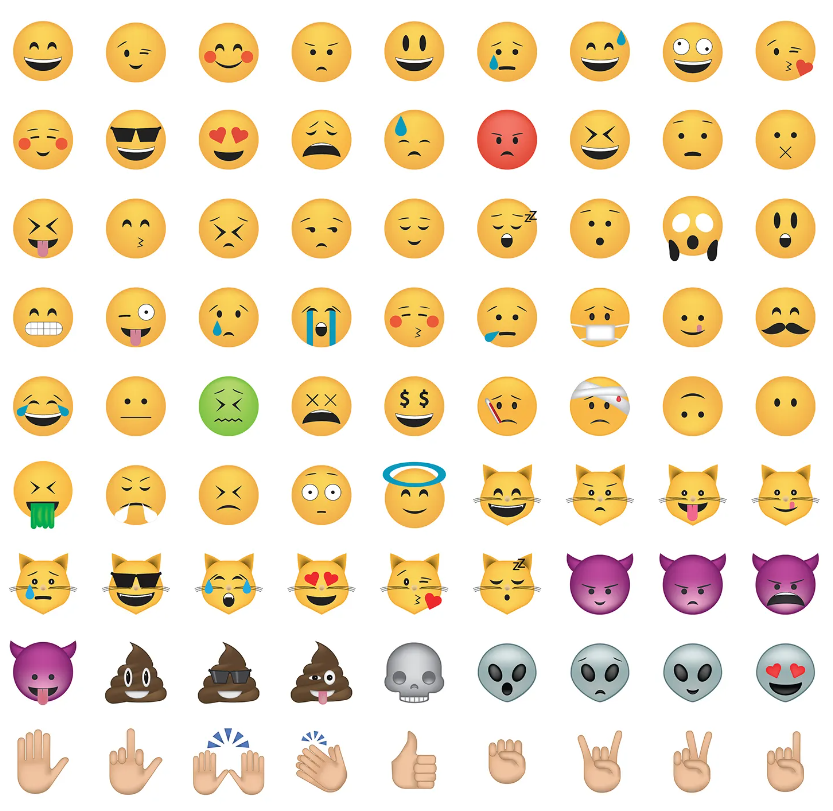
How Emojis Are Transforming Sentiment Analysis in the Digital Age
Have you ever wondered what those little emojis at the end of your messages really say about your emotions? We use them every day—whether it’s a simple smiley face, a thumbs-up, or the occasional heart—but these small icons are doing more than just adding color to our texts. They’re changing the way we express and interpret emotions online. And now, thanks to cutting-edge research, emojis are playing an even bigger role in understanding the complex emotions behind short texts on social media platforms.
In a world where billions of messages are posted daily, how can we truly grasp the emotions behind the words? The answer lies in the fascinating new realm of emoji-based sentiment analysis, and a groundbreaking study may have just unlocked the key.
A World of Emotions in Short Texts
Imagine scrolling through your favorite social media feed. You see a quick comment like, “Nick has such cute dogs 😊.” Is this a positive sentiment? Of course. But what if the sentence didn’t have the emoji? Without it, interpreting the emotion behind the words can be tricky. Emojis have become powerful tools in how we communicate feelings in short-form texts. Think of them as the emotional punctuation in a digital conversation.
However, interpreting these emotions isn’t as simple as counting the number of smiley faces. With the help of an advanced sentiment analysis model called EMFSA (Emoji-Based Multifeature Fusion Sentiment Analysis), scientists are now able to dissect short social media posts, uncovering the hidden emotional layers behind emojis, words, and even the topics being discussed.
This breakthrough could completely change how businesses, governments, and researchers understand public sentiment—whether they’re tracking trends on Twitter or gauging reactions to a new product launch.
The Challenges of Short-Text Sentiment Analysis
The digital age has given us a vast amount of data, but much of it comes in snippets. Think about Twitter’s 280-character limit or the short comments we leave on Instagram or TikTok. While these platforms are goldmines for real-time public opinion, they present a challenge for researchers: how do you accurately determine someone’s emotions when their words are few and often ambiguous?
Traditional sentiment analysis models—those that only examine the text—struggle in this arena. Text-based models often fail to detect sarcasm, irony, or the nuanced emotions hiding between the lines. That’s where emojis come into play. They provide much-needed context, transforming a vague sentence into something rich with emotional cues.
But just like words, not all emojis are created equal. The same emoji can mean different things depending on who is using it or the context in which it’s used. For example, a “crying face” could express sadness, frustration, or even laughter depending on the situation. This is where the EMFSA model steps in to save the day.
Meet EMFSA: The Model That Sees Beyond the Words
Developed by researchers at Tang et al., EMFSA is an innovative sentiment analysis model that combines several key features to better understand short-text sentiments on social media. Think of it as a supercharged detective that not only looks at the text but also at the emoji meanings and the overall topic being discussed. Here’s what makes EMFSA so powerful:
- Emoji-enhanced text analysis: This feature allows the model to extract deeper emotional meaning by analyzing the context in which emojis appear. By recognizing that emojis can change the tone of a message, EMFSA can pinpoint whether the sentiment is positive, negative, or neutral with greater accuracy.
- Cross-attention mechanism: Ever notice how certain words seem more important than others in a sentence? EMFSA’s cross-attention system identifies these critical words, ensuring that the model pays more attention to emotionally charged content. This allows for more precise interpretations of the text, leading to a significant boost in sentiment classification.
- Topic recognition: Not only does EMFSA look at emojis and words, but it also factors in the broader topic of the conversation. This is crucial for understanding context. For example, the word “hot” in a conversation about the weather means something entirely different from the word “hot” in a fashion blog. By fusing text, emoji, and topic features, EMFSA creates a well-rounded view of the emotion behind a message.
Why This Matters Now: The Real-World Impact
In an era where public opinion can shift overnight, businesses, governments, and organizations need to stay one step ahead. EMFSA offers the ability to track real-time sentiment on social media platforms with unprecedented accuracy. Whether it’s gauging reactions to a political speech or monitoring public sentiment during a crisis, the applications are vast and immediate.
For companies, this means getting a clearer picture of how customers feel about their products or services. Imagine launching a new marketing campaign and being able to track not just what people are saying about it, but how they feel about it—down to the very emojis they use. This kind of insight could help brands pivot strategies in real-time, leading to better customer engagement and more successful outcomes.
For healthcare and mental health professionals, emoji-based sentiment analysis could be used to identify early warning signs of distress, anxiety, or depression, helping connect people to resources faster. In this way, EMFSA could have life-saving implications.
The Future of Sentiment Analysis
While EMFSA is already making waves, this is just the beginning. The researchers behind the model are looking to take things even further. Their next goal? Integrating EMFSA with multimodal data—like video, audio, and images—to create an even more holistic understanding of emotions. This could revolutionize not only sentiment analysis but also fields like artificial intelligence and human-computer interaction.
Another area of interest for future research is detecting sarcasm and irony, two notoriously difficult emotional states to interpret. Can an emoji that typically expresses joy be masking sarcasm? The challenge lies in teaching models like EMFSA to recognize these subtleties, but the potential breakthroughs could be game-changing.
Join the Conversation
What emoji do you think best captures your current mood? Have you ever used an emoji in a way that might be considered sarcastic or ironic?
We’d love to hear how you think emoji-based sentiment analysis could transform industries or impact your own social media habits. Join the discussion in the comments below!
Join the Science Adventure:
Stay updated with the latest discoveries in science! Our weekly newsletter is perfect for teachers and science enthusiasts. Get the newest research, major breakthroughs, and fascinating stories delivered to your inbox for free. Enhance your teaching and learning. Subscribe today! If you liked this blog, please share it! Your referrals help This Week in Science reach new readers.



